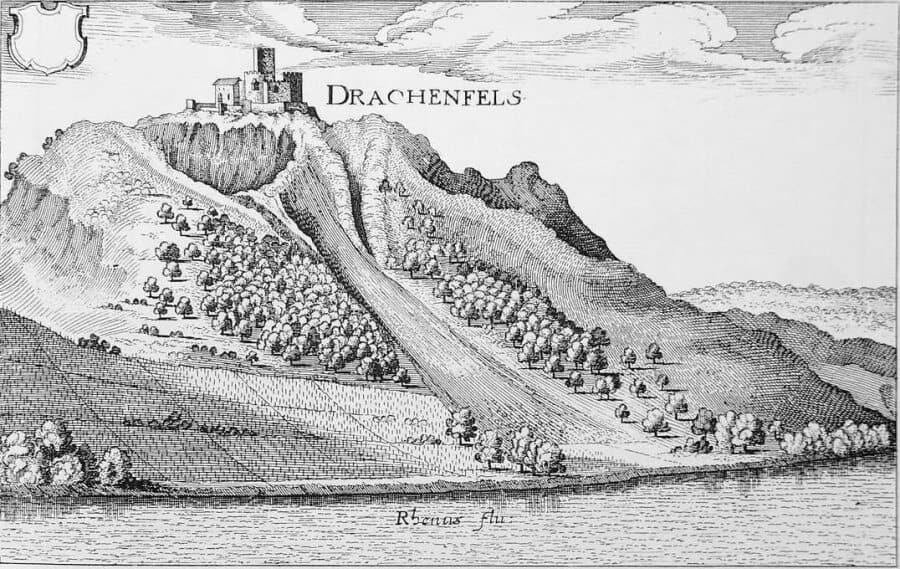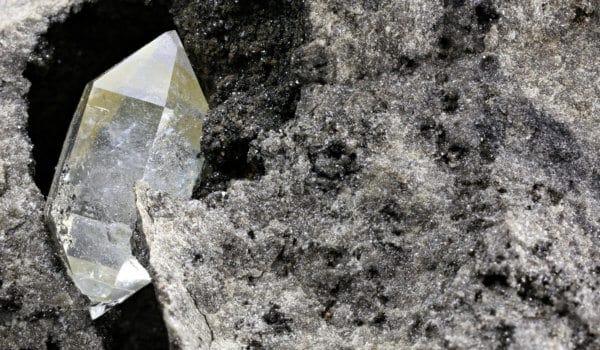Once upon a time when knits were going to wars for their kings somewhere in the seven hills in the western Germany lived one dragon-Fafnir.
As these nasty creatures always do, our dragon found the most beautiful place on the river Rhine, one fortress on the top of the hill, and decided to settle there. People from the local villages were afraid of him, so one day a brave king decided to kill the dragon. He gathered his knits and started climbing to the top of the hill where the beast was seeping. When the animal noticed king’s big army, it started to wave with his huge wings and destroyed the walls of the fortress. Stones were rolling down the edge but the fearless king managed to reach the top and kill Fafnir. Dragon’s blood started to flow and turned into the spring of mineral water around which many spas were established. This is just one of the numerous interesting legends about the dragon and remains of the fortress in the Siebengebirge (Seven hills).
Today we may not believe in dragons, but everyone who gets an opportunity to visit Königswinter and Drachenfels (Dragon’s Rock) will definitely feel like part of some fairy tale. While walking around this area it is not hard to imagine how everything looked like centuries ago, not even to start believing in dragons…At least for a while.

Drachenfels is one of the seven hills near Bonn situated around the river Rhine. This area has always been attractive for living, tourism, and strategically well positioned, so many armies tried to conquer it, poets like Heinrich Heine and Lord Byron writing songs about it, prominent people like Konrad Adenauer building houses here. In addition to all mentioned, Baron Stephan von Sarter built the stunning castle Drachenburg at the foot of the hill which is everyday open for visitors.

Drachenburg with its gardens and an amazing view on the surrounding area gives an impression that you are entering the world of some Disney character. The castle was built in the late nineteen century as a residence of a rich financial expert who wanted to show his place in the society and get back with his childhood love. She unfortunately died when the castle was finished, and therefore Sarter decided not to live in the castle. The use of this incredible place was changing over the time, from special schools to museum, as it remained until today. The collection of the castle includes many valuable pieces of furniture, paintings, antiquities, old cars and many more.

From castle the way goes up the hill to antique ruins of one fortress where, according to the legend, dragon spent the last days of his life. This old castle was built from valuable stone trachyte which was also used for many medieval cathedrals, including the magnificent Kölner Dom. Many local landlords were earning a lot from selling these precious stones to constructors of the Dom. Castle has been destroyed and repaired many times during the ages, but today we can see only small piece of it. But for all of those who where persistent to climb to the top, either by foot or train, there is also one more surprise next to the ruins: huge cascade terrace with a restaurant and an breathtaking view. This picture will remain in your memory for a lifetime.

Lord Byron shared his impressions about Drachenfels in one of his songs:
The castled crag of Drachenfels
Frowns o’er the wide and winding Rhine.
Whose breast of waters broadly swells
Between the banks which bear the vine,
And hills all rich with blossomed trees,
And fields which promise corn and wine,
And scattered cities crowning these,
Whose far white walls along them shine,
Have strewed a scene, which I should see
With double joy wert thou with me!
Support us!
All your donations will be used to pay the magazine’s journalists and to support the ongoing costs of maintaining the site.
Share this post
Interested in co-operating with us?
We are open to co-operation from writers and businesses alike. You can reach us on our email at [email protected]/[email protected] and we will get back to you as quick as we can.









